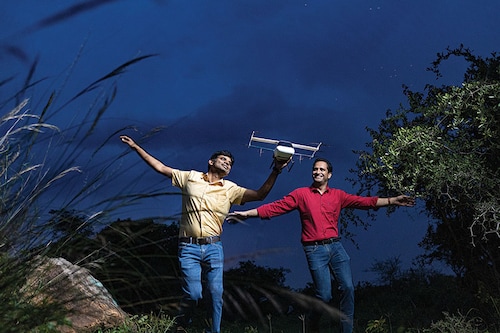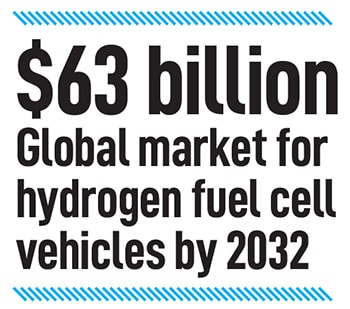BluJ Aerospace: Conjuring hydrogen tech for India and the globe
BluJ Aerospace envisions hydrogen fuel cell-powered long-range passenger aircraft and autonomous drones for cargo


Before he started BluJ Aerospace, Maruthi Amardeep Sri Vatsavaya was part of the founding team at Skyroot Aerospace right up until their historic first rocket launch. BluJ, in Hyderabad, is another example of the cascading effect of one company spawning more entrepreneurs that we’re familiar with in SaaS (software as a service), for example, and which we are just beginning to see in deeptech—from EV (electric vehicles) technologies to space exploration.
Vatsavaya and his friend and co-founder Utham Kumar Dharmapuri want to build a 10-seater hydrogen-electric passenger aircraft that has a range of up to 1,000 km, by 2028. But first, they’ve started out with an electric commercial drone with a 100 kg payload capacity.
“The whole vision of starting BluJ for us is to really make aviation simple and sustainable by building long-range VTOL aircraft," Vatsavaya says. “If we see 10 years down the line with the direction where aviation is moving, there is a possibility that hydrogen can actually bring the cost of flying down."
 He has a master’s degree in aerospace from the University of Cincinnati in the US and more than 15 years of experience in the industry. Ditto for Dharmapuri, who’s worked with Boeing, Airbus and Mitsubishi.
He has a master’s degree in aerospace from the University of Cincinnati in the US and more than 15 years of experience in the industry. Ditto for Dharmapuri, who’s worked with Boeing, Airbus and Mitsubishi.
The path to that hydrogen-electric hybrid passenger aircraft isn’t a straight line. In the interim, a lower-hanging fruit is the cargo opportunity with a large drone, which initially at least is going to be all-electric.
When they get to the hydrogen-electric hybrid, an important technology differentiator for BluJ will be the way they’re engineering a master propulsion control unit which communicates with the flight computer and controls the complete switching between using the onboard hydrogen fuel cell and the battery pack.
Many of India’s young deeptech companies are going the Tesla route, meaning they are attempting to become completely vertically integrated tech companies in their categories. BluJ isn’t an exception, so pretty much everything is being designed in-house whereas basic components such as battery cells have to be imported.
 In about six months, Vatsavaya and Dharmapuri expect to demonstrate their designed-at-BluJ hydrogen-electric propulsion system, but on the ground. They are also developing a “Type-4" hydrogen storage system, which would be another important milestone when ready. Such a storage tank uses carbon fibre to provide the strength needed to store the gas under pressure.
In about six months, Vatsavaya and Dharmapuri expect to demonstrate their designed-at-BluJ hydrogen-electric propulsion system, but on the ground. They are also developing a “Type-4" hydrogen storage system, which would be another important milestone when ready. Such a storage tank uses carbon fibre to provide the strength needed to store the gas under pressure.
One technical consideration here is that while hydrogen gives great energy output per kilogram, it’s not the case per unit volume, which means storing enough of it—say, for a 500 km range—can become a compromise with passenger and cargo space.
On the business front, BluJ is in talks with potential customers in the logistics industry and for defence applications as well. While the drone will hit the market within two years, BluJ’s commercial hydrogen-electric passenger plane is at least five years out, but the concept has already found interest from Australia to Scandinavia—both regions where many remote locations need better connectivity.
First Published: Oct 20, 2023, 11:06
Subscribe Now